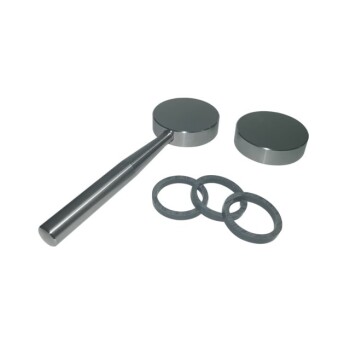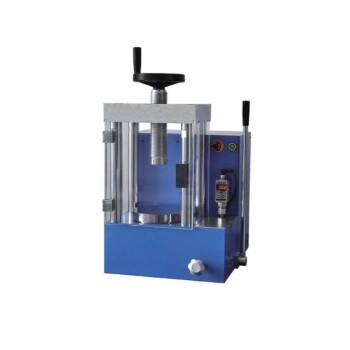The XRF (X-ray Fluorescence) test procedure is a systematic process that involves sample preparation, excitation, measurement, and analysis to determine the elemental composition of materials. The procedure begins with sample preparation, which includes crushing, grinding, and pressing or fusing the sample to ensure it is homogeneous and representative. Once prepared, the sample is analyzed using an XRF gun or analyzer, which emits X-rays to excite the sample's atoms. The excited atoms emit fluorescent X-rays, which are captured by the detector, converted into electrical signals, and processed to identify and quantify the elements present. The results are then displayed and can be stored or transferred for further analysis.
Key Points Explained:

-
Sample Preparation:
- Crushing and Grinding: The sample is crushed and ground to ensure it is homogeneous and representative of the material being analyzed. This step is crucial for obtaining accurate results.
- Pressing or Fusing: The ground sample is then pressed into pellets or fused into beads. Pressed pellets are a common method due to their high-quality results, speed, and low cost.
-
Excitation:
- Emission of X-rays: The XRF analyzer emits X-rays towards the prepared sample. These X-rays interact with the atoms in the sample, causing inner-shell electrons to be displaced.
- Fluorescence: Outer-shell electrons fill the vacancies left by the displaced inner-shell electrons, emitting fluorescent X-rays in the process. The energy of these fluorescent X-rays is characteristic of the elements present in the sample.
-
Measurement:
- Detection of Fluorescent X-rays: The XRF analyzer's detector captures the emitted fluorescent X-rays. The detector measures the energy spectrum of these X-rays, which is used to identify the elements and their quantities in the sample.
- Signal Conversion: The captured X-rays are converted into electrical pulses by the detector. These pulses are then sent to a preamplifier, which amplifies the signal for further processing.
-
Signal Processing:
- Digital Signal Processing: The amplified signal is sent to a digital signal processor (DSP), which converts the X-ray measurements into a digital format. This digital data is then transferred to the analyzer's central processing unit (CPU).
- Compositional Analysis: The CPU performs compositional analysis by comparing the measured energy spectrum with known spectra of elements. This allows for the identification and quantification of the elements present in the sample.
-
Result Display and Storage:
- Display of Results: The results of the analysis are displayed on the XRF analyzer's screen. These results typically include the identified elements and their concentrations.
- Data Storage and Transfer: The results can be stored in the analyzer's memory for later retrieval. Additionally, the data can be transferred to an external computer for further analysis, reporting, or archiving.
-
Applications:
- Screening Analyses: XRF analysis is often used for screening samples to quickly determine their elemental composition. This is useful in various fields, including mining, environmental monitoring, and quality control in manufacturing.
- Proficiency Testing: Conducting proficiency tests with XRF analyzers helps ensure the accuracy and reliability of the analysis. This is particularly important in industries where precise elemental composition is critical.
- Reference Materials: Manufacturing reference materials for XRF analysis ensures that the analyzers are calibrated correctly and that the results are accurate. These reference materials are used to validate the performance of the XRF analyzers.
In summary, the XRF test procedure is a comprehensive process that involves careful sample preparation, precise excitation and measurement, and thorough signal processing to determine the elemental composition of materials. The results are displayed, stored, and can be transferred for further analysis, making XRF a valuable tool in various scientific and industrial applications.
Summary Table:
| Step | Description |
|---|---|
| Sample Preparation | Crushing, grinding, and pressing/fusing to ensure homogeneity and representation. |
| Excitation | X-rays excite sample atoms, causing fluorescence. |
| Measurement | Detector captures fluorescent X-rays for energy spectrum analysis. |
| Signal Processing | Digital processing identifies and quantifies elements in the sample. |
| Result Display | Results are displayed, stored, or transferred for further analysis. |
| Applications | Used in mining, environmental monitoring, manufacturing, and proficiency testing. |
Need precise elemental analysis? Contact us today to learn more about XRF testing!















